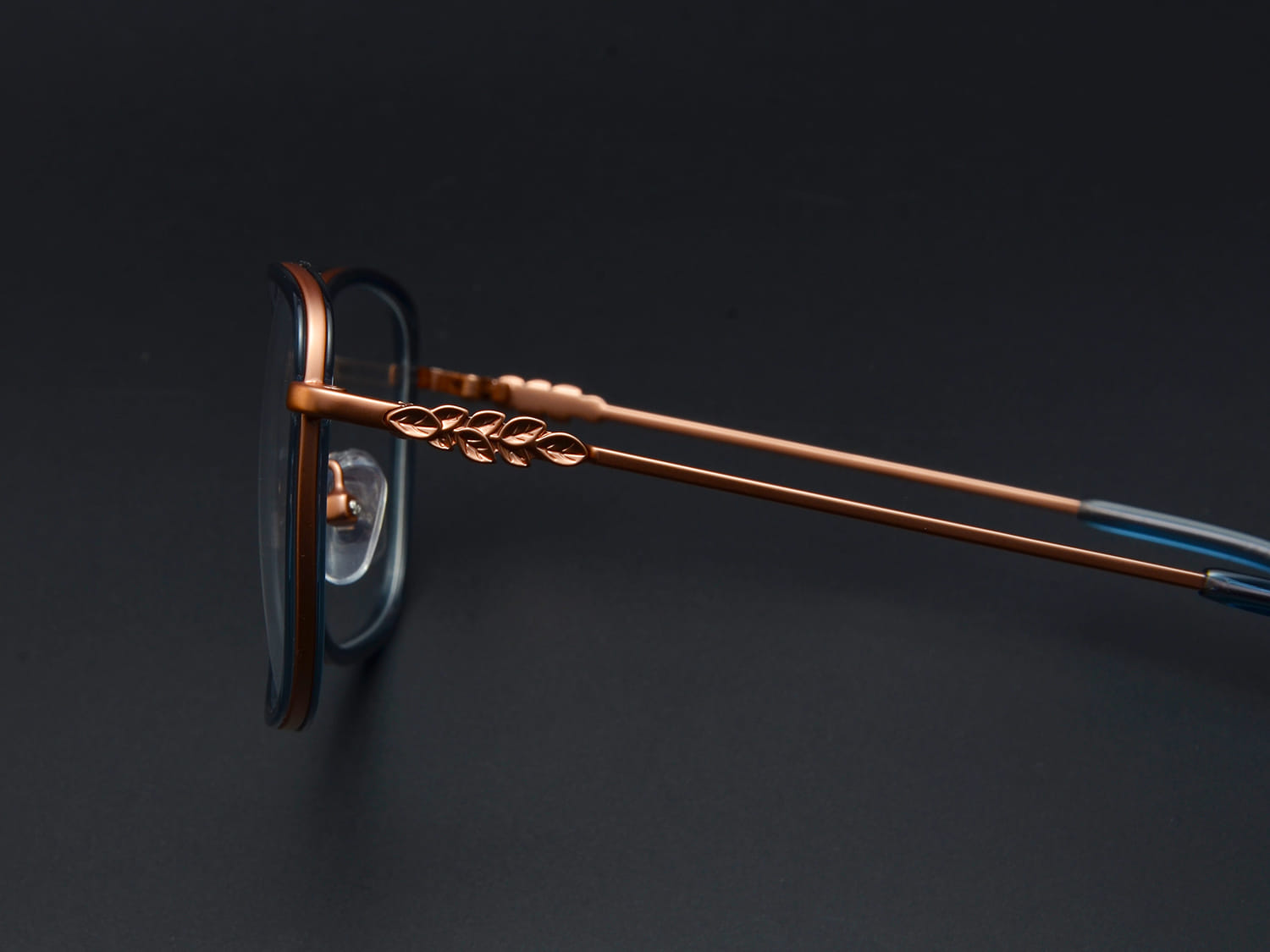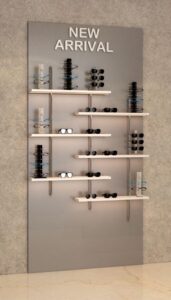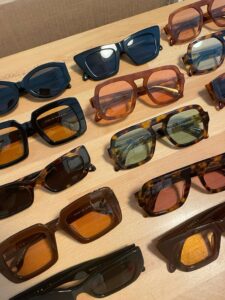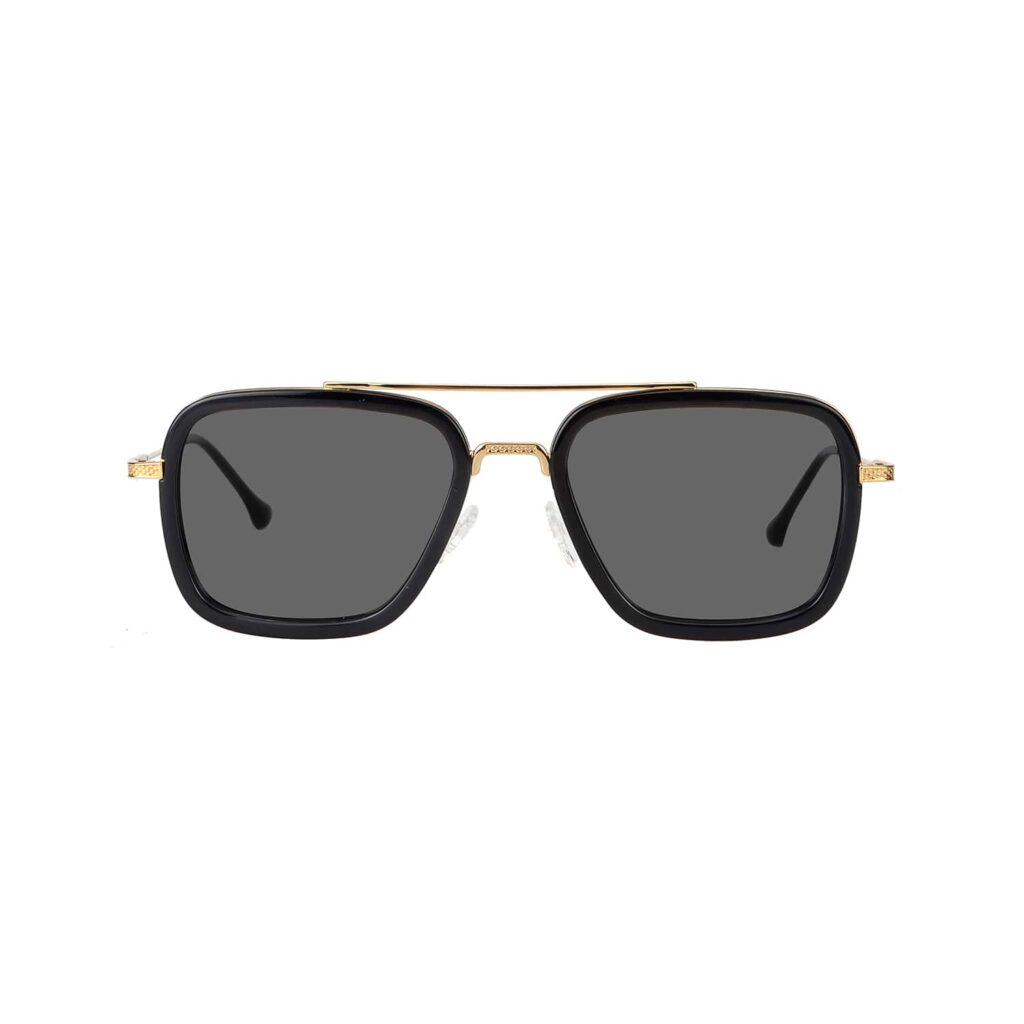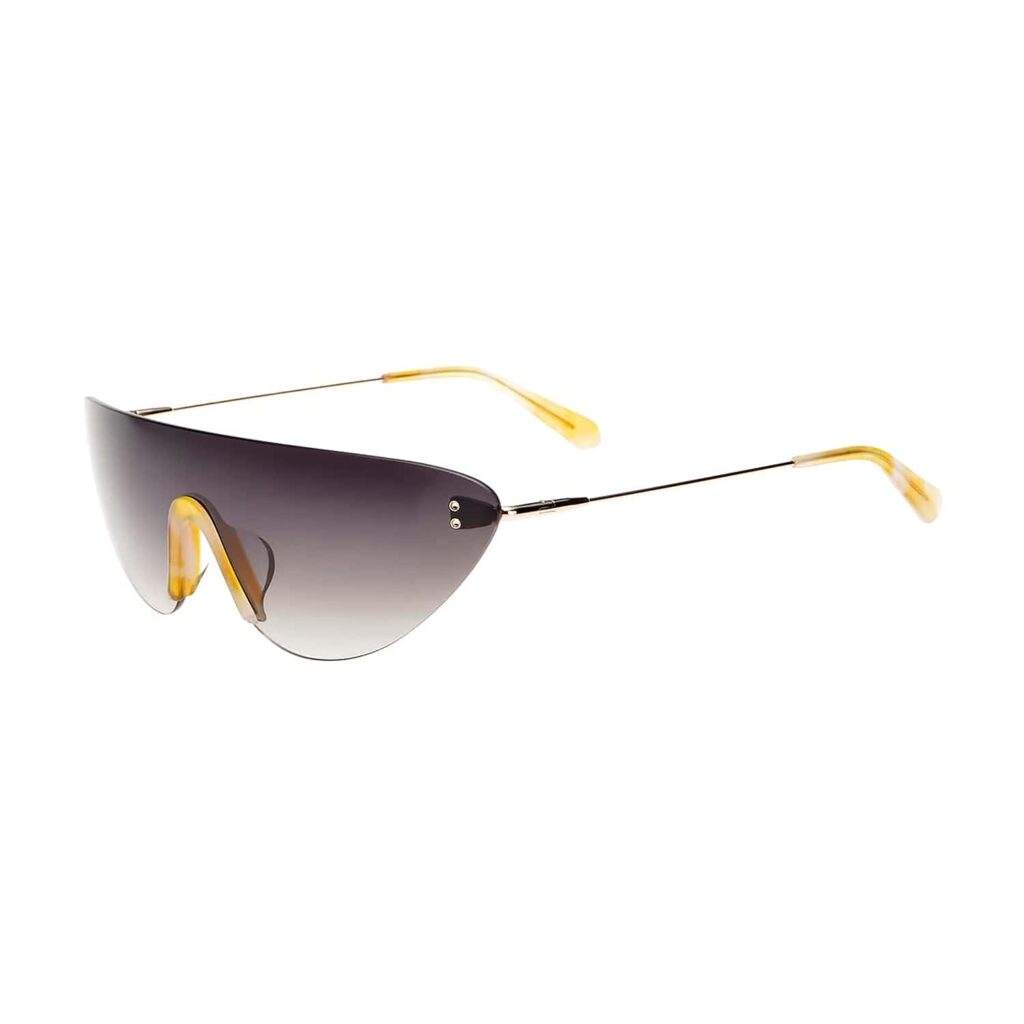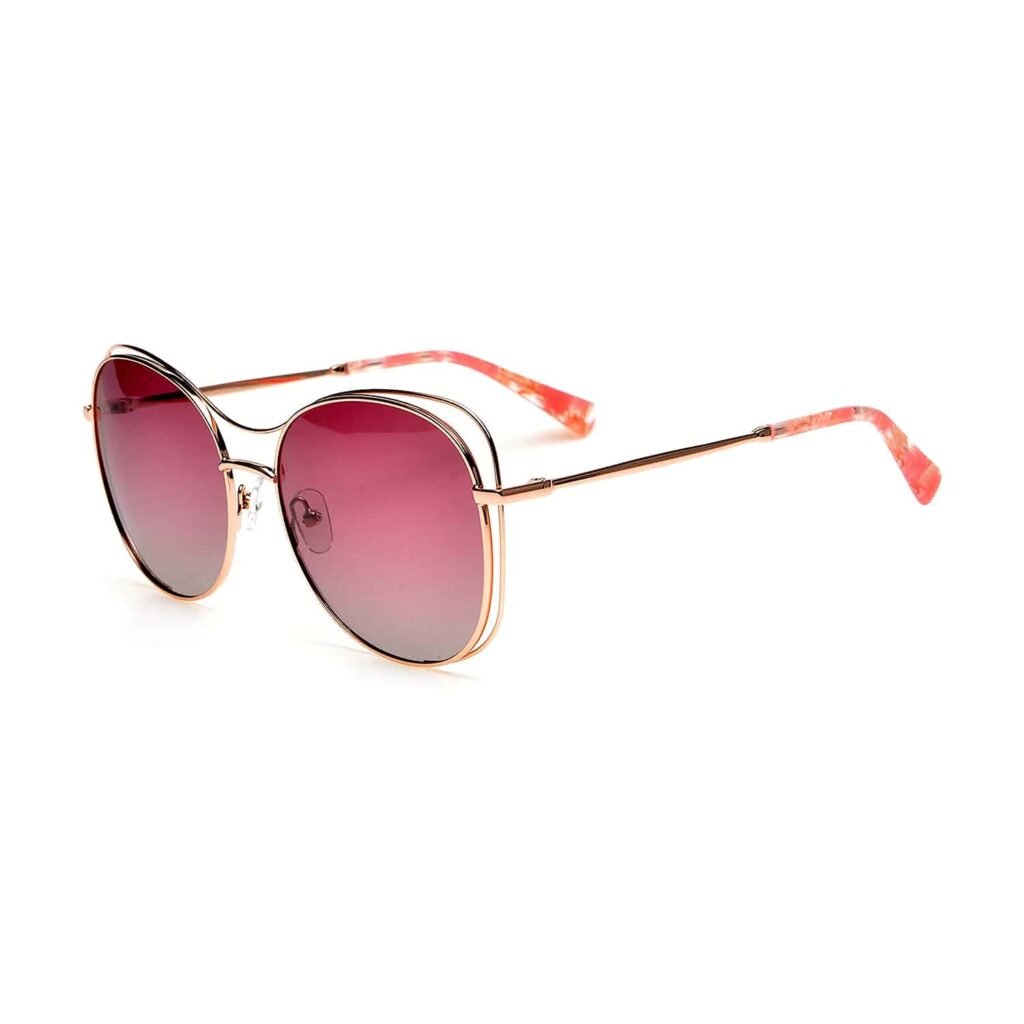Glasses Frame Materials Introduction
When choosing eyewear frames, understanding the advantages and disadvantages of different materials is crucial. As a professional eyewear manufacturer, we will introduce several primary materials used for eyewear frames to help you, as a buyer or supplier, make informed decisions. This knowledge will not only enhance the quality of your products but also meet your customers’ dual demands for style and functionality.

Acetate Frames — Modern High-End Eyewear Glasses Frame Materials
Features
Acetate frames are widely used and are a common choice for high-end eyewear. Made from cotton and acetate-based plastic, they are produced in specialized acetate sheet factories, with well-known manufacturers including Mazzucchelli 1849, Jimei, and Jinyu. This eco-friendly material is ideal for custom production without the need for injection molds, offering excellent shaping capabilities. Designers can easily turn their creative ideas into actual products. Whether for complex shapes or intricate textures, acetate meets various design needs. The production process involves precise shaping using CNC technology, along with hinge assembly, pressing, and polishing techniques, ensuring each frame showcases a unique appearance and refined touch.
Outstanding Durability
The durability of acetate makes it increasingly popular among eyewear designers, making it a top choice for our products. Its surface hardness is high, resistant to wear, and the color is embedded within the material rather than painted on the surface, which makes it nearly impervious to fading. Even after prolonged use, acetate frames maintain their appealing appearance. This durability not only extends the lifespan of the products but also reduces the need for consumers to frequently replace their eyewear, saving them costs.
Advantages
-
Unique Elegance
Acetate frames surpass many low-cost alternatives in quality, showcasing a distinctive elegance that suits the high-end market. Our products excel in functionality and their aesthetic design meets modern consumer standards. With a rich variety of colors and textures, each pair of glasses can become a fashionable accessory, catering to diverse consumer desires for personalization and uniqueness. -
Exquisite Craftsmanship
The production process for each frame reflects exceptional craftsmanship, providing a competitive edge for our suppliers. Handcrafted frames not only enhance product quality but also imbue each piece with a unique personality, making them more attractive in the market. This meticulous craftsmanship ensures that every detail is closely monitored, thereby enhancing the overall product value.
Disadvantages
- Temperature Sensitivity
Acetate can deform in high-temperature environments, so special care is needed when sourcing this material. We advise buyers to consider this factor when selecting and storing frames to ensure long-term performance. In high heat or humid conditions, acetate may lose its original shape, so it’s essential to provide consumers with maintenance advice during the design and sales process to extend the life of their eyewear.
In conclusion, acetate frames have become a popular choice in the modern eyewear market due to their lightweight, durable, and elegant characteristics. However, when sourcing and using these frames, it’s important to pay attention to their sensitivity to temperature changes to ensure optimal performance and user experience. As a manufacturer, we are committed to providing quality acetate eyewear, working closely with suppliers and wholesalers to meet the diverse needs of our Glasses Frame Materials clients.

Cadres métalliques
Titanium Frames
Durability and Impact Resistance
Titanium frames are renowned for their exceptional strength, making them ideal for customers who need high durability. Titanium metal has a very high strength-to-weight ratio, meaning that titanium frames can withstand greater forces and pressures at the same weight. Even in extreme environments—such as high heat, humidity, or cold conditions—titanium frames maintain their stability and structural integrity. This characteristic makes them a perfect choice for outdoor enthusiasts and professionals who face various challenges without the risk of deformation or damage.
Lightweight Comfort
The lightweight nature of titanium makes it a top choice for combining style and functionality. Compared to other metals, titanium frames are significantly lighter, allowing wearers to avoid fatigue during extended use. This comfort is particularly beneficial for daily wear, enabling users to move freely while working, relaxing, or exercising without worrying about the burden of their eyewear. Additionally, the flexibility of titanium helps reduce pressure on the nose and ears, further enhancing the wearing experience.
Aluminum Frames
Lightweight and Corrosion Glasses Frame Materials-Resistant
Aluminum frames are widely used in our production line due to their lightweight and corrosion-resistant properties. The lightness of aluminum makes these glasses ideal for consumers seeking convenience. Aluminum alloys not only offer reduced weight but also provide good strength, ensuring that aluminum frames can support their wearers while remaining lightweight. Furthermore, aluminum’s excellent corrosion resistance protects against sweat and chemicals in the environment, extending the lifespan of the eyewear. Aluminum frames are primarily used for certain types of sports lunettes de soleil, which are typically manufactured through die-casting processes requiring molds.
Flexibility and Bendability
The bendable nature of aluminum makes it suitable for various design styles. As a manufacturer, we can provide diverse aluminum frame designs to meet the ever-changing market demands. Whether for classic styles or modern fashion designs, aluminum frames can adapt flexibly, satisfying the unique needs of different consumers. This flexibility not only fosters creative design but also enhances durability in everyday use.
Stainless Steel Frames
Strength and Corrosion Resistance
Stainless steel frames offer a great balance of strength, cost, and corrosion resistance, making them ideal for mass production. Stainless steel boasts exceptional strength, ensuring that the frames do not easily deform or break during daily use, while also providing good resistance to corrosion against sweat, moisture, and other external factors. This durability makes stainless steel frames an economical and reliable choice, especially in competitive markets.
Stainless steel frames can also achieve diverse aesthetic designs through various surface treatments, such as painting or electroplating. This versatility allows stainless steel eyewear to not only serve practical functions but also meet consumers’ demands for style and individuality. Additionally, their low maintenance costs and long lifespan make stainless steel frames a favored option among many consumers and Glasses Frame Materials suppliers.
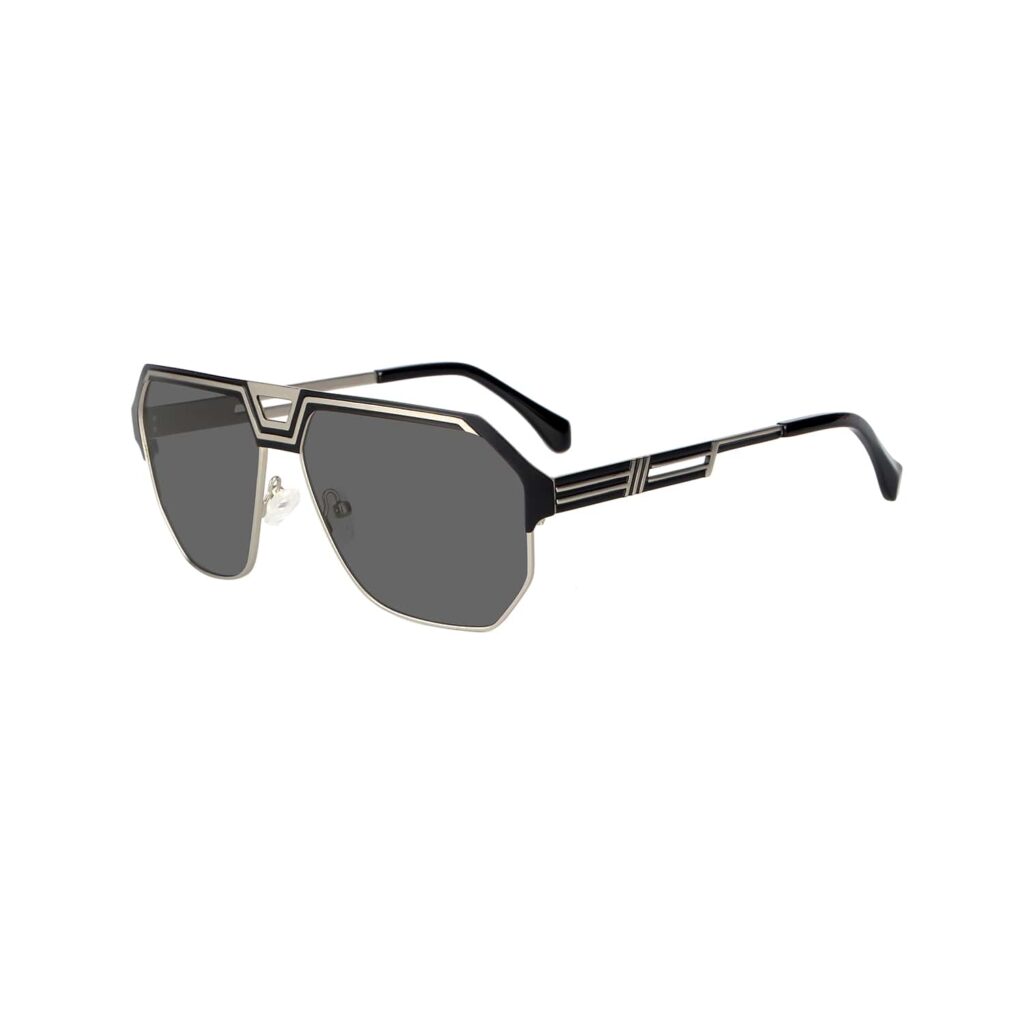
Wooden Glasses Frames
Material Selection
Wooden glasses frames are commonly made from materials like Dalbergia and bamboo. Dalbergia, known for its darker red-brown color and even grain, is perfect for high-end and customized designs. It’s not only visually appealing but also strong and durable, making it ideal for customers who prioritize quality and design. You can contact us to receive a color catalog.
Bamboo, on the other hand, is lighter in color, typically ranging from pale yellow to light brown. It can also be heat-treated to achieve a black finish, giving it a sleek and natural look. As a fast-growing renewable resource, bamboo is both eco-friendly and strong, offering durability and sustainability to consumers who care about the environment and product quality.
To enhance the durability of wooden glasses frames, there is now a technique that embeds thin aluminum sheets within the wood. This method preserves the natural beauty of the wood while significantly strengthening the frame, reducing concerns about breakage. The combination of metal and wood makes these frames both stylish and more resilient, meeting the market demand for high-quality products Glasses Frame Materials .
Advantages
Customized Design
Each wooden glasses frame has a unique grain pattern, aligning perfectly with the growing demand for personalized products. As manufacturers and suppliers, we offer customized options, allowing clients to choose from various shapes, colors, and textures. This flexibility helps brands stand out in the market and enhances their competitive advantage.
Eco-Friendly Glasses Frame Materials
Wooden glasses frames are among the most environmentally friendly options. Wood is a renewable resource, especially bamboo, which grows quickly and sustainably. These frames are also naturally biodegradable, reducing their environmental impact and aligning with modern consumers’ expectations for eco-friendly products.
Disadvantages
Lower Durability
While wood offers many advantages, it is susceptible to environmental factors. Excess humidity or dryness can cause wooden glasses frames to warp or crack. To address this, our factory now incorporates aluminum sheets into the wood to increase the frame’s strength and durability.
We recommend clients choose the right type of wood based on the intended usage environment. Avoiding extreme heat or humidity will also help extend the lifespan of wooden eyewear.
Conclusion
Wooden glasses frames stand out with their unique natural beauty, eco-friendly properties, and customizable designs, making them an ideal choice for both style and sustainability-conscious consumers. However, paying attention to environmental factors during use will ensure optimal performance. With proper care and the right wood selection, wooden glasses frames provide long-lasting comfort for consumers and offer more market opportunities for brands.

Plastic Frames – Injection Molding Type Glasses Frame Materials
What is Injection Molding?
Injection molding is a manufacturing process where heated plastic is injected into a steel mold to form glasses frames. Unlike acetate frames, which are cut and polished from solid sheets, injection molding relies on molds to shape the frames, offering higher efficiency and consistency in mass production. This method is ideal for large-scale manufacturing, allowing suppliers and manufacturers to reduce costs while maintaining quality. In contrast, acetate frames require more labor-intensive cutting, shaping, and polishing processes, making them more suitable for premium, hand-crafted eyewear.
- Advantages of Injection Molding: High production efficiency, suitable for large-scale manufacturing, lower costs, and the ability to create complex designs.
- Disadvantages of Injection Molding: High initial mold cost, less flexibility for design changes, and a potentially less natural feel compared to acetate frames.
- Advantages of Acetate Frames: Premium texture, ideal for high-end products, and allows for post-production manual adjustments and engravings.
- Disadvantages of Acetate Frames: Longer production cycle, higher cost, and less suitable for mass production.
Common Materials for Injection Molding and Performance Comparison
1. Polycarbonate (PC)
-
Advantages:
- Impact Resistance: Polycarbonate is extremely resistant to impact, making it ideal for sports and safety eyewear.
- Lightweight: It’s very light, providing comfort for long-term wear.
- Protection UV: Naturally blocks UV rays without needing additional coatings.
- High Flexibility: Easy to mold into various shapes, allowing for intricate designs.
-
Disadvantages:
- Scratch Resistance: Polycarbonate is prone to scratches and requires surface treatments to enhance durability.
- Moderate Clarity: While clear, its transparency isn’t as high as some acetate materials.
-
Applications: Sports glasses, children’s eyewear, safety eyewear.
-
Commentaires des clients: Appreciated for its lightweight and durability, but some users report it scratches easily and has a less premium feel.
2. TR90
-
Advantages:
- Flexibility: TR90 is highly flexible and returns to its original shape after bending, making it more durable and less likely to break.
- Lightweight: Offers excellent comfort for daily wear due to its lightness.
- Chemical Resistance: Resistant to a wide range of chemicals, ensuring a long product lifespan.
- Variety of Colors: TR90 can be easily dyed into various colors, making it popular for stylish and colorful frames.
-
Disadvantages:
- Surface Finish: Requires precise surface treatment for a smooth and polished finish.
- Heat Resistance: While durable, TR90 is less resistant to high temperatures compared to other materials.
-
Applications: Fashion eyewear, casual eyewear.
-
Commentaires des clients: Customers praise its lightweight and comfort, but durability can decrease after long periods of use.
3. Ultem (PEI – Polyetherimide)
-
Advantages:
- High-Temperature Resistance: Ultem excels in high-temperature environments, making it suitable for industrial uses.
- Strength: Ultem offers superior strength and durability compared to TR90 and polycarbonate, providing excellent impact resistance.
- Lightweight: Despite its strength, Ultem is still lightweight, ensuring comfort during wear.
-
Disadvantages:
- High Cost: Ultem is more expensive to produce than other plastic materials, making it a premium option.
- Difficult to Process: Its high strength and hardness require more complex processing techniques.
-
Applications: High-end glasses frames, industrial-use eyewear.
-
Commentaires des clients: Customers seeking high-quality and durable frames favor Ultem, but its higher price limits its appeal to more budget-conscious consumers.

Performance Comparison and Application Recommendations
| Material | Main Advantages | Main Disadvantages | Suitable Applications | Commentaires des clients |
| Polycarbonate (PC) | Impact-resistant, lightweight, UV protection | Prone to scratches, moderate clarity | Sports eyewear, children’s eyewear, safety glasses | Durable but can scratch easily |
| TR90 | Flexible, lightweight, chemical-resistant, colorful | Surface treatment required, moderate heat resistance | Fashion eyewear, casual eyewear | Comfortable and stylish, but long-term durability may decrease |
| Ultem (PEI) | High strength, high-temperature resistance, lightweight | Higher cost, harder to process | High-end glasses frames, industrial eyewear | Premium feel, durable but expensive |
Conclusion
Injection molding is a key technique in modern eyewear manufacturing, providing efficiency and consistent quality. Materials like Polycarbonate, TR90, and Ultem offer a variety of options depending on the target market, usage scenarios, and customer preferences. For manufacturers, suppliers, and wholesalers, injection molding is ideal for producing durable, lightweight, and customizable glasses frames in large quantities. Each material has its unique benefits, allowing manufacturers to tailor their products to meet specific consumer demands while maintaining cost-efficiency in large-scale production.
Conclusion: How to Choose the Right Glasses Frame Materials Based on Customer Needs
Each eyewear material has its own unique properties, making it suitable for different markets. As a manufacturer, understanding these variations helps us meet the specific demands of your customers. When selecting the best material, it’s important to consider factors such as weight, strength, flexibility, durability, color options, and resistance to wear and tear.
Matching Materials to Market Needs
Choosing the right frame material depends heavily on the needs of your target audience:
- Metal frames are great for customers who value strength and a sleek, modern look. They’re durable and adjustable, often preferred for high-end or professional eyewear.
- Acetate frames offer vibrant color choices and are ideal for fashion-forward clients. They’re lightweight and comfortable, making them popular for everyday eyewear.
- Wooden frames appeal to eco-conscious customers who prefer sustainable and natural materials. They provide a unique, personalized aesthetic but may require more care in handling.
- Plastic materials like TR90, Polycarbonate, and Ultem cater to clients seeking lightweight, durable, and flexible options for sports, fashion, or casual eyewear.
Each material’s unique qualities, like strength, flexibility, and aesthetic appeal, play a role in market demand. We recommend buyers and suppliers contact us to explore the best options for their business. As a factory and wholesale supplier, we’re committed to helping you choose the perfect glasses frames for your market, ensuring that you offer the right balance of quality, design, and functionalityGlasses Frame Materials
Allen Lin
Poste : Propriétaire
Entreprise : Lunettes Joysee
Courriel : allen.lin@joysee-eyewear.com
WhatsApp : +8613456050627
Site web : www.joysee-eyewear.com
